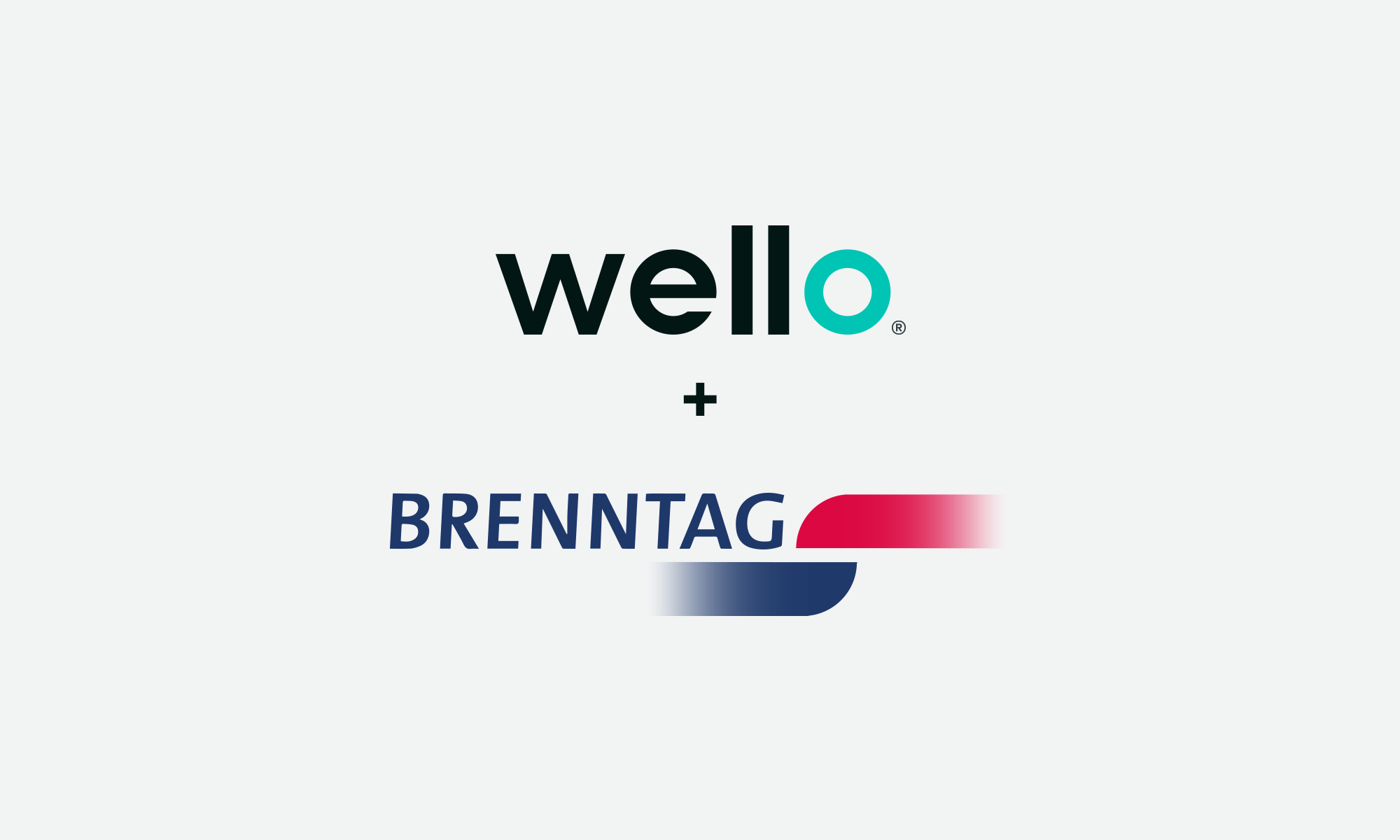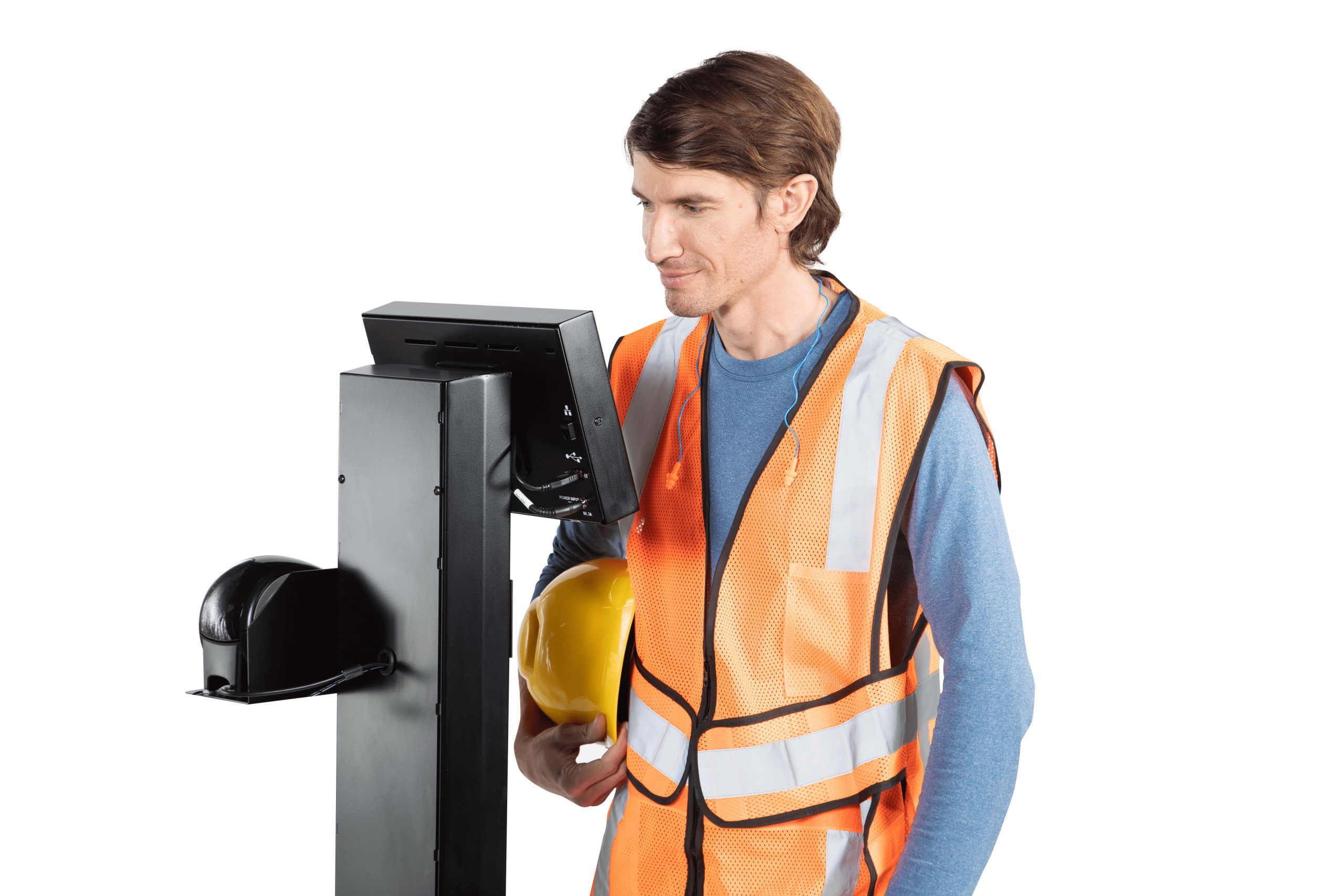Chemicals are an essential part of manufacturing, yet they are typically sold in very large quantities. Brenntag is the world’s largest chemical distributor, offering simplified, mass market access to thousands of products and services. In early 2020, the global coronavirus pandemic forced the company to review health and safety protocols at facilities around the world. For Brenntag’s Southwest, Inc. in the U.S., Wello offered a similar value proposition — simple, fast temperature screening for hundreds of employees and visitors every day.
Tom Crain is the President of Brenntag Southwest, Inc. He has the overall responsibility for both the commercial side of the business, as well as the operations and administration of all 14 facilities located across five states. When it comes to environment, health, and safety (EHS), Tom oversees a small regional team, which is supported by a larger Brenntag North America team.
Brenntag Southwest responds to COVID-19
At Brenntag, “safety-first” is a guiding principle. “It’s a big part of our company culture,” says Tom, “It’s in our DNA.” When the coronavirus pandemic hit, Tom immediately began looking at ways to limit employee exposure to the virus. The Brenntag North American team convened a pandemic task force that consisted of twelve members from various areas of the business, such as sales, operations, administration, and EHS, to ensure that all concerns would be taken into consideration.
Although the world still knew little about the virus, and recommendations were still in flux, Tom had to make fast decisions to keep employees safe. One of the first was to close all Brenntag Southwest facilities, which he did a week prior to lockdown mandates from government and regulatory agencies.
During the shutdown, the team conducted a quick but rigorous study that reviewed CDC recommendations and gathered information from colleagues in mainland China who were already dealing with the virus. They looked at ways they could ensure employee safety as they interacted with coworkers, as well as with customers and external service providers like truckers.
The evolution of Brenntag Southwest’s return-to-work protocol
As Brenntag’s customers began to resume business and place orders, the company slowly opened a few of its facilities. The pandemic task force created a “return to work” protocol that included a variety of measures. This mainly focused on the operations side of the business, as administrative and sales staff were still working from home. Along with mandatory face masks and enhanced cleaning, the company gave all on-site employees pint bottles of hand sanitizer to take home. Better hygiene at home would mean lower risks in the workplace.
The team also implemented a questionnaire that screened for COVID-19 exposure. To get past the front door, all employees and visitors were required to fill out the questionnaire, which they would then repeat on every work day or visit.
Soon, the company added manual temperature screening alongside the questionnaire; anyone registering a temperature over 100.1 would be asked to leave. However, the equipment was expensive and only produced readings in Celsius, which added unnecessary complexity to the process.
Business recovery meant a greater need for infection control
With more and more orders coming in, more employees were needed on the floor, which meant a heavier volume of traffic through the daily screening process. Tom and his team felt that it wasn’t practical or cost effective to have someone stationed at the door to conduct the temperature screening and collect questionnaires. Also, it would leave some room for human error as potentially a few people could get through unscreened. “It was more than we could ask of one person,” says Tom. “We needed a way to automate the whole process.” Adding even more urgency to the situation, one of Brenntag Southwest’s facilities experienced a COVID-19 outbreak.
A simple solution for automated temperature screening
About six weeks into the new protocol, Tom was on a management team call and someone brought up a local news story about automated temperature screening that featured the welloStationX. Tom decided to look into the solution further, and he reached out to the Wello sales team. In the end, he ordered two Wello kiosks to pilot the solution at a couple of his facilities.
Ultimately, what sold Tom on Wello was its simplicity. Other solutions seemed far too complicated for Brenntag’s needs. All he needed was to see a confirmation that a person did not have a temperature reading above the threshold — nothing else. The “I’m Wello” sticker with a person’s name and date fit the bill perfectly. The process was also fast. He says, “Wello is a simple, non-invasive way to determine whether or not someone has a fever in about three to five seconds.”
Everyone gets screened and verified
Currently, three Brenntag Southwest sites have installed a welloStationX that screens from 30 to 70 people a day. The sites each converted an open reception lobby into a screening station centered around the Wello kiosk. They installed a video camera in the corner pointed at the welloStationX and a two-way radio system that allows communication between the screening area and main building. If someone needs assistance with screening, they can ask for help using the radio.
Once a person passes screening, the camera checks for their “I’m Wello” sticker to verify their status, and the person is allowed entry into the building.
Brenntag Southwest is ready for business as usual
For Tom and the Brenntag Southwest team, Wello has proven to be a reliable solution that ensures that everyone is screened every day without exception. Since installing Wello, no COVID-19 outbreaks have occurred, and Tom intends to keep it that way. Infection control has become as important as other EHS practices — in fact, both go hand in hand. “If someone were to infect even one person,” he says, “then you have the potential for an outbreak, which puts everyone at risk for more than just the virus. When fewer people are doing the work, then accidents and mistakes can happen.”
Brenntag Southwest, Inc. is still running limited operations due to the reduced customer demand. Several facilities cater heavily to the oil and gas industry, which has been hit hard by the pandemic. As those industries begin to recover, more facilities will re-open to handle the spike in business. Tom plans to install a welloStationX in every open facility as a safety-first best practice.


